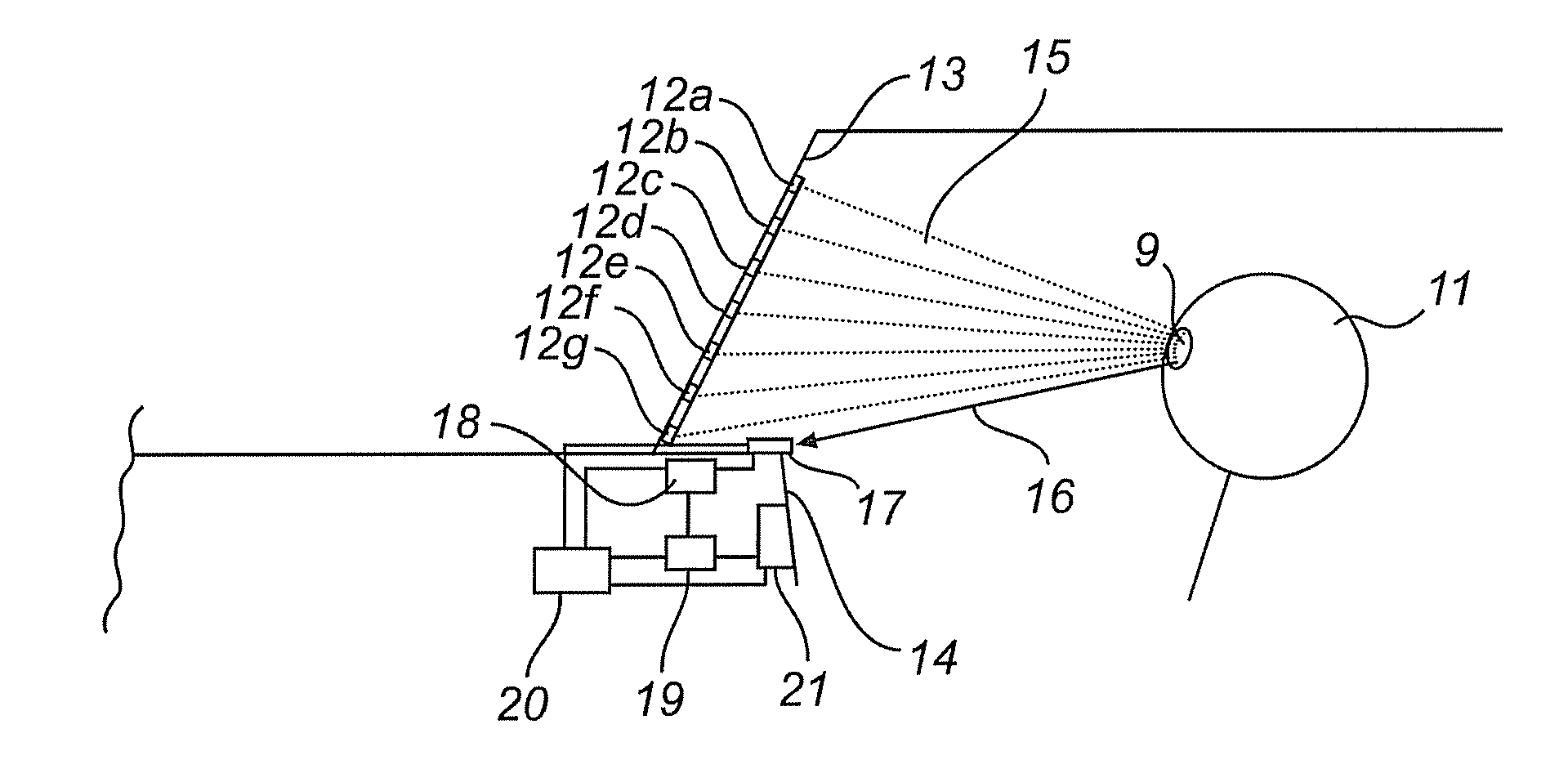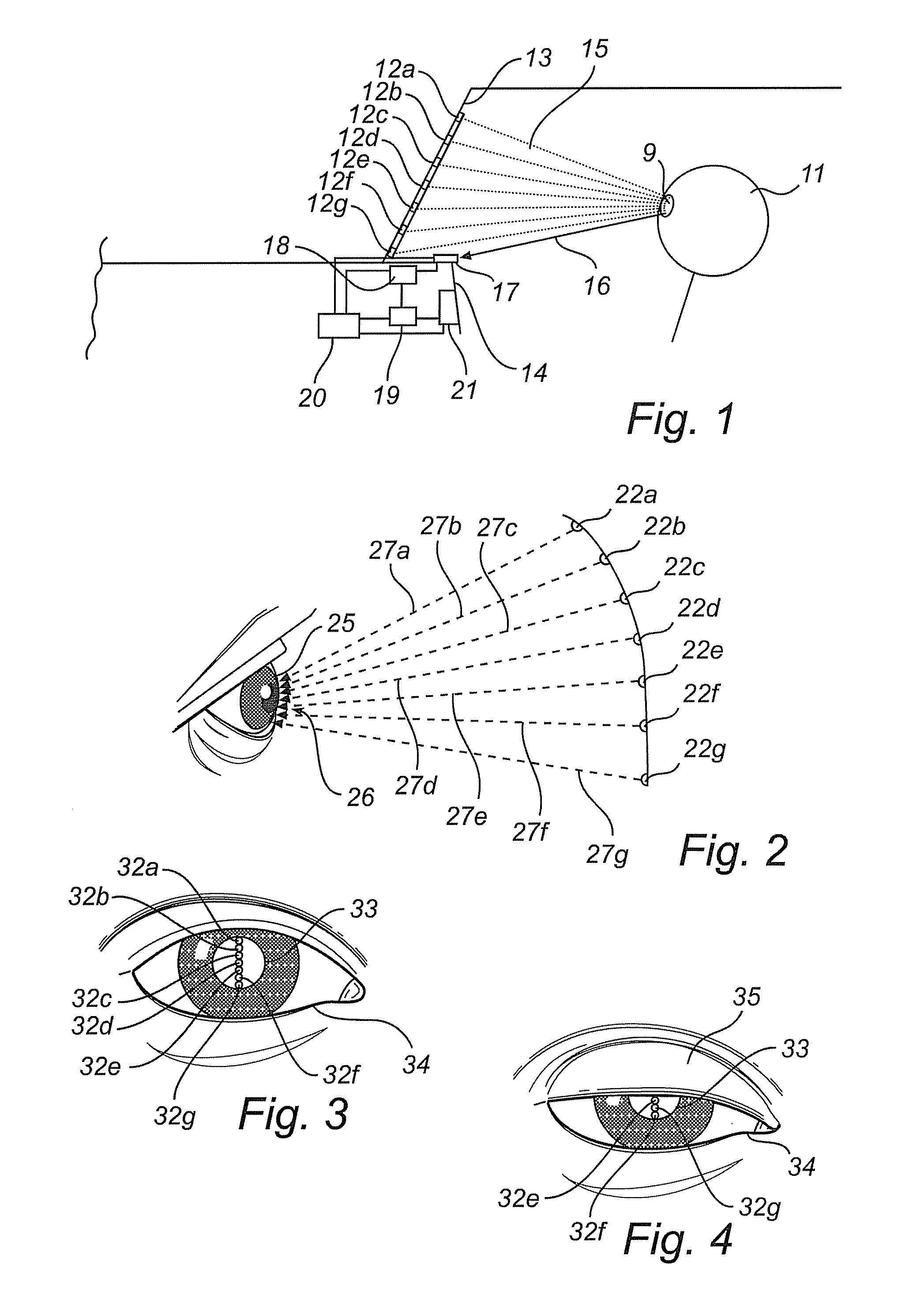Eye closure detection using structured illumination
- Summary
- Abstract
- Description
- Claims
- Application Information
AI Technical Summary
Benefits of technology
Problems solved by technology
Method used
Image
Examples
Embodiment Construction
[0056]The present invention relates to a drowsiness monitoring system. The embodiments disclosed herein are merely exemplary or representative of the present invention. The present invention is not to be limited to the specific disclosured presented herein.
[0057]With reference generally to FIGS. 1-6, embodiments of the present invention will be described. In FIG. 1, a part of a vehicle, for example, a car in which the present invention can be implemented is schematically shown in cross-section. An array or set of IR or NIR light sources 12a-12g are arranged on a windscreen post 13 of a vehicle 10. In this illustrated embodiment of the present invention, the set of light sources includes seven light sources, e.g., LEDs, 12a-12g.
[0058]In connection to this, it should be pointed out that this is merely exemplifying, and the set of light sources may include, for example, five, eight or nine light sources. The higher number of light sources arranged in the set, the higher resolution of ...
PUM
 Login to View More
Login to View More Abstract
Description
Claims
Application Information
 Login to View More
Login to View More - R&D
- Intellectual Property
- Life Sciences
- Materials
- Tech Scout
- Unparalleled Data Quality
- Higher Quality Content
- 60% Fewer Hallucinations
Browse by: Latest US Patents, China's latest patents, Technical Efficacy Thesaurus, Application Domain, Technology Topic, Popular Technical Reports.
© 2025 PatSnap. All rights reserved.Legal|Privacy policy|Modern Slavery Act Transparency Statement|Sitemap|About US| Contact US: help@patsnap.com



